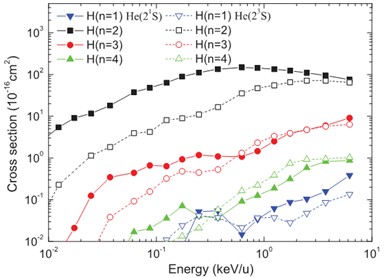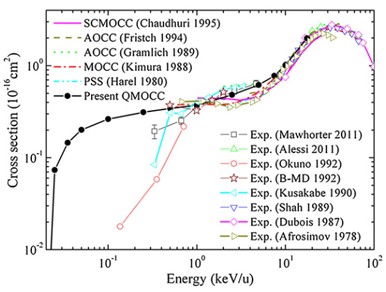The researchers in Institute of Modern Physics, Chinese Academy of Sciences (IMP) and their collaborators studied the electron capture and excitation processes in collisions of H+, He2+ with He atoms at energies below 10keV/u by using the quantum-mechanical molecular orbital close-coupling (QMOCC) method.
For H+-He collision, when the initial state is He(1s2s), the triplet capture cross sections are much faster decreasing with energy than the corresponding singlet ones in the low energy region (see figure 1). The rotational couplings play a critical role in the collision dynamics.
For He2+-He collision, the single capture cross sections are found to be in good agreement with other experimental and theoretical results at energies above 0.4keV/u. However, for energies below 0.4 keV/u, the present results show a slower decrease with decreasing the energy than the experimental ones (see figure 2). For double capture process, the present calculations agree well with other experimental and theoretical results.
The results have been published in Phys. Rev. A 85, 042719 (2012) and J. Phys. B 45, 235203 (2012).
The articles can be linked as follows:
http://pra.aps.org/abstract/PRA/v85/i4/e042719
http://iopscience.iop.org/0953-4075/45/23/235203.

Figure 1. State selective capture cross sections for H+-He(1s2s) collisions.(Image by IMP)

Figure 2. Single capture cross sections for He2+-He collisions. (Image by IMP)

